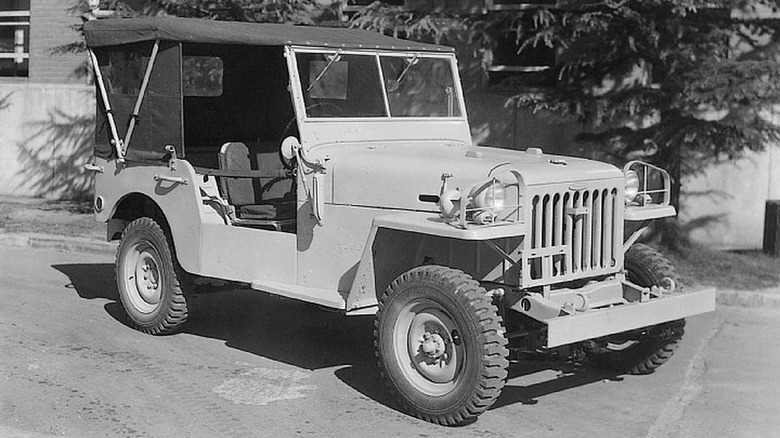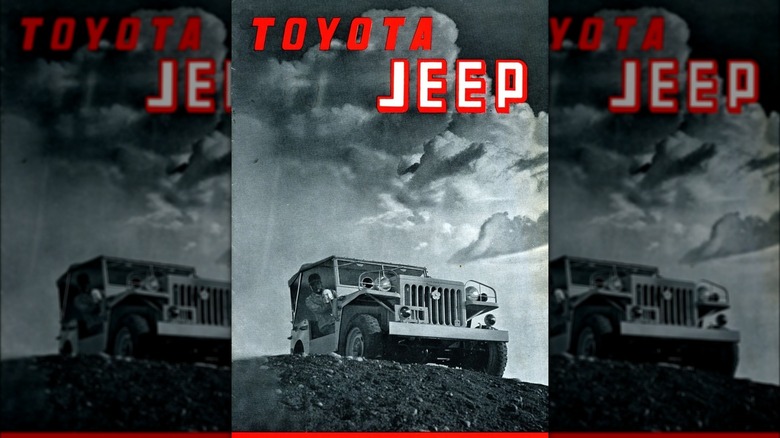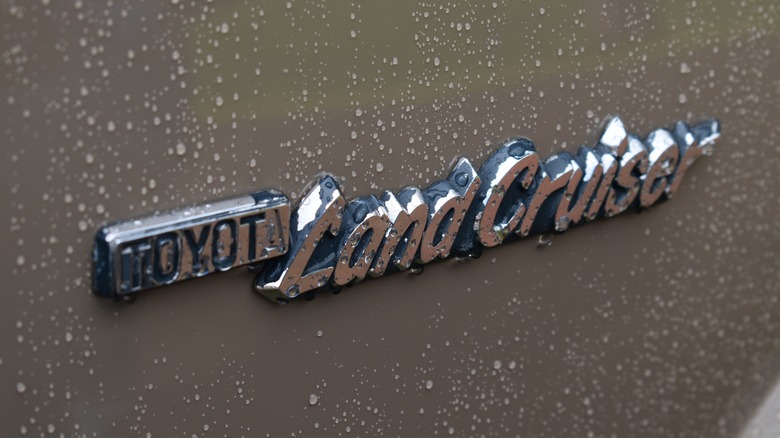Why The Original Toyota Land Cruiser Was Called A Jeep
The word jeep has a long history of use that stretches back to at least the First World War, where it was used to describe an untested piece of equipment or a new recruit. In 1940, the United States Army reached out to 135 automakers asking for a light reconnaissance 4x4. The resulting general-purpose (GP) vehicles built by Bantam, Willys, and Ford became collectively known as jeeps. It wasn't until 1950 that Willys-Overland officially trademarked the Jeep term, bringing us to the original Toyota Land Cruiser, which for its first four years of existence was actually known as the Jeep BJ because of some confusion regarding the local language.
1950 was a globally hectic year. As Willys trademarked Jeep, General Douglas MacArthur was still in Japan with a contingent of occupying American forces helping to rebuild the ravaged country. Then, the Soviet-backed North Koreans invaded South Korea, and America's focus shifted to helping stop the communist threat.
The U.S. military quickly realized they needed trucks and other vehicles for this new war, which Japanese manufacturers were already familiar with building. For instance, Tokyu Kurogane Industries built the Type 95, a compact scout reconnaissance car, and Toyota was a primary truck supplier, both used by the Imperial Japanese Army during WWII. A plan was formed to harness Japanese workers and factories to build vehicles locally that could then be used in whatever scenario might crop up in the region.
Toyota's first Land Cruiser was literally a parts bin special
Jeeps became incredibly famous during World War II — so much so that it helped build the Jeep empire. Bids were solicited from Japanese automakers much in the same way American jeeps had been to build a home-grown utility 4x4 using domestically sourced raw materials from the island.
Five months after receiving the green light, Toyota Motor Company unveiled a prototype to the National Police Reserve in January 1951. The NPR was formed under the direction of the U.S. Military Advisory Group during the occupation to fill the void left by dissolving Japan's own military after the war, but also serve as a lightly armed national police force that could utilize these utility 4x4s.
To call this prototype a parts bin special would be an understatement. Japan still lacked the infrastructure and deep resources needed to build new vehicles, so it was pieced together using components from existing vehicles. The suspension was ripped off a Toyopet passenger car, and the chassis from Toyota's one-ton compact 4x2 Type SB truck. The body had a crude, boxy open design reminiscent of other jeeps made during WWII, and was easy to make, and required little tooling. The longer wheelbase should have given it more space, but the inline-six made it more cramped than American jeeps.
The transmission and engine — an oversized 3.4-litre six-cylinder gas engine kicking out 85 hp and 156 lb-ft of torque — was scuttled from its Type B four-ton truck. This is the very same B-Series engine found in the prewar one-and-a-half-ton–model GB truck used by the Japanese Imperial Army. Incredibly, it's more or less a license-built clone of Chevrolet's Stovebolt engine from the mid-1930s, thus making Toyota's first Land Cruiser inline-six engine a direct descendant of Chevy.
What's in a name?
Ironically, the National Police Reserve (NPR) passed on Toyota's BJ and picked Mitsubishi's licensed version of the Willys instead. Toyota went back to the drawing board and created a formidable 4x4 that reached the Shinto temple atop Mount Atago and navigated the old pilgrim route to the sixth station on Mount Fuji — both previously only reachable by horse. The NPR was so impressed that another contract was given to Toyota for 298 of their Jeep BJs.
The B stood for the B-series engine, and the J for Jeep (although no official documentation exists to back that claim). Willys had a problem with this since it had just trademarked the name a year before and sent Toyota what amounted to a cease and desist letter.
Toyota apologized, claiming there was a simple language misunderstanding. The Japanese loved the Jeep design as much as everyone else and thought the jeep term was a generic noun used to describe a general type of vehicle. On June 24, 1954, Managing Director Hanji Umehara changed the name to Land Cruiser, even though he thought might get them into trouble with the makers of the British 4x4 utility vehicle Land Rover (it didn't), and the rest is history.


